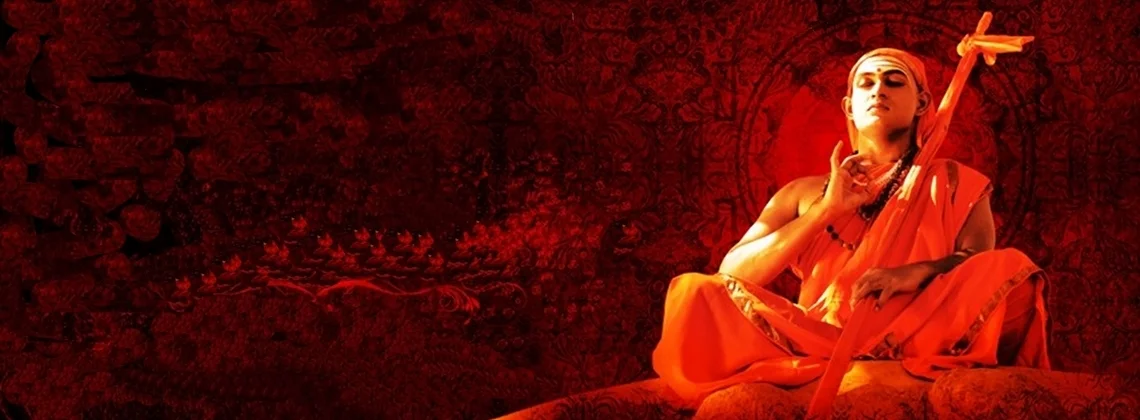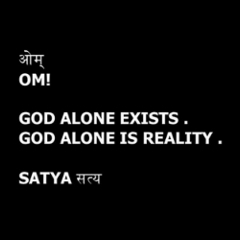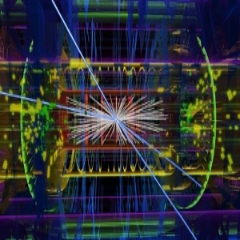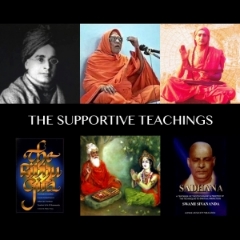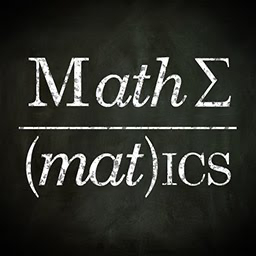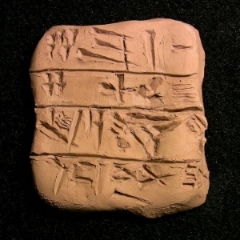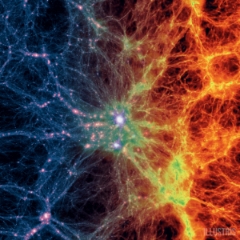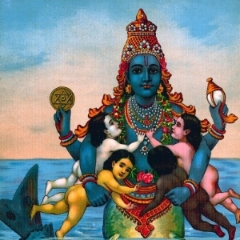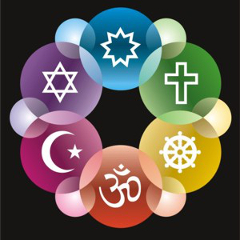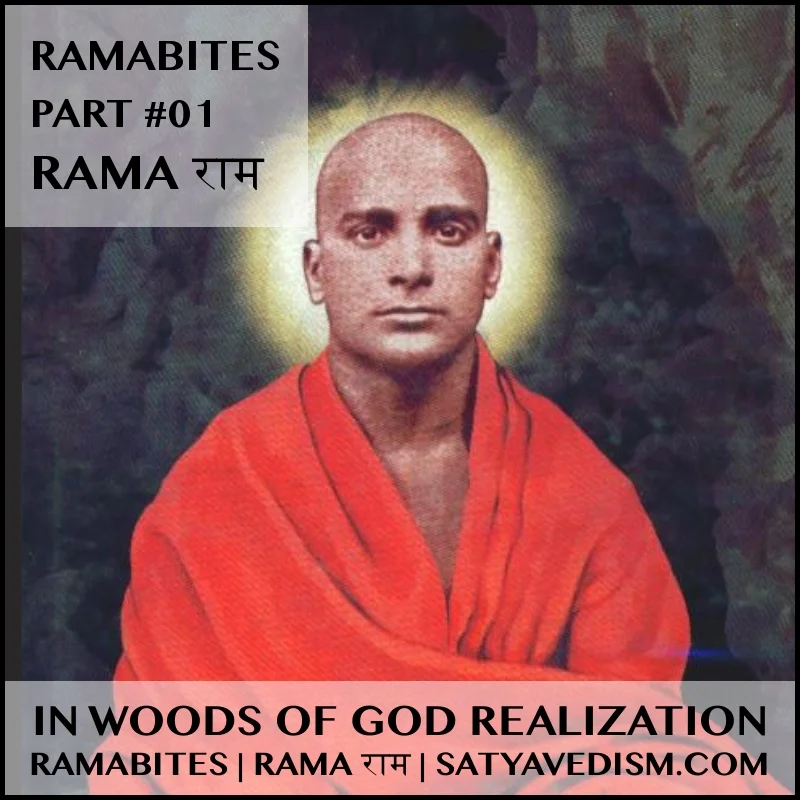BRHADARANYAKA UPANISAD | 4.4.22 | PT 1 | AMOETD
| | homeBRHADARANYAKA UPANISAD | 4.4.22 | SRI SANKARACARYA
|| PART 1 ||
sa va esa mahan aja atma yo'yam vijnanamayah pranesu ; ya eso'ntar-hrdaya akasah tasmin sete , sarvasya vasi , sarvasyesanah , sarvasyadhipatih ; sa na sadhuna karmana bhuyan no evasadhuna kaniyan . esa sarvesvarah , esa bhutadhipatih , esa bhutapalah . esa setur vidharana esam lokanam asambhedaya . tam etam vedanuvacanena brahmana vividisanti , yajnena , danena , tapasanasakena ; etam eva viditva munir bhavati , etam eva pravrajino lokam icchantah pravrajanti . etadd ha sma vai tat purve vidvamsah prajam na kamayante : kim prajaya karisyamah ; yesam no'yam atmayam loka iti . te ha sma putraisanayas ca vittaisanayas ca lokaisanayas ca vyutthaya , atha bhiksa-caryam caranti ; ya hy eva putraisana sa vittaisana , ya vittaisana sa lokaisana ; ubhe hy ete esane eva bhavatah sa esa neti nety atma ; agrhyah , na hi grhyate; asiryah , na hi siryate ; asangah , na hi sajyate ; asito na vyathate , na risyati ; etam u haivaite na tarata iti , atah papam akaravam iti , atah kalyanam akaravam iti ; ubhe u haivaisa ete tarati , nainam krtakrte tapatah . || 4.4.22 ||
22. That great , birthless Self which is identified with the intellect and is in the midst of the organs , lies in the ether that is within the heart . It is the controller of all , the lord of all , the ruler of all . It does not become better through good work nor worse through bad work . It is the lord of all , It is the ruler of all beings , It is the protector of all beings . It is the bank that serves as the boundary to keep the different worlds apart .
The Brahmanas seek to know It through the study of the Vedas , sacrifices , charity , and austerity consisting in a dispassionate enjoyment of sense-objects . Knowing It alone one becomes a sage . Desiring this world ( the Self ) alone , monks renounce their homes . This is ( the reason for it ) ; The ancient sages , it is said , did not desire children ( thinking ) ,
" What shall we achieve through children , we who have attained this Self , this world ( result ) . "
They , it is said , renounced their desire for progeny , for wealth and for the worlds , and lived a mendicant life . That which is the desire for progeny is the desire for wealth , and that which is the desire for wealth is the desire for the worlds , for both these are but desires . This self is That which has been described as " Not this , not this " . It is imperceptible , for It is never perceived ; undecaying , for It never decays ; unattached , for It is never attached ; unfettered — It never feels pain , and never suffers injury . ( It is but proper ) that the sage is never overtaken by these two thoughts ,
" I did an evil act for this " , and " I did a good act for this " .
One conquers both of them . Things done or not done do not trouble one .
|| BHASYA || : Bondage and liberation together with their causes have been described by the preceding portion consisting of the Mantras as well as the Brahmana . The nature of liberation has again been elaborately set forth by the quotation of verses . Now it has to be shown how the whole of the Vedas is applicable to this subject of the Self ; hence the present paragraph is introduced .
By recapitulating the topic of Self-knowledge with its results in the way it has been dealt with in this chapter , it is sought to show that the entire Vedas , except the portion treating of ceremonies having material ends , are applicable to this . Hence the words . " That great " , etc , recapitulating what has been stated . That refers to something already mentioned .
What is it ? It is pointed out by the words , " Which is identified with the intellect " , etc , which are intended to preclude any reference to the Self just mentioned ( verse 20 ) . Which one is meant then ? The answer is : Which is identified with the intellect and is in the midst of the organs . The passage is quoted for settling the doubt , for at the beginning of Janaka's questions it has been stated , " Which is the self ? — This ( infinite entity ) that is identified with the intellect and is in the midst of the organs " , etc . ( IV . iii . 7 ) .
The idea is this : By the demonstration of desire , work and ignorance as attributes of the non-Self , the self-effulgent Atman that has been set forth in the passage in question is here freed from them and transformed into the Supreme Self , and it is emphatically stated ,
" It is the Supreme Self , and nothing else " ; it is directly spoken of as the great , birthless Self . The words , " Which is identified with the intellect and is in the midst of the organs " ,
have been already explained and have the same meaning here . Lies in the ether that is within the lotus of the heart , the ether ( Akasa ) that is the seat of the intellect . The Atman lives in that ether containing the intellect . Or the meaning may be that the individual self in the state of profound sleep dwells in that unconditioned Supreme Self , called Akasa , which is its very nature . This has been explained in the second chapter by way of answer to the question , " Where was it then ? " ( II . i . 16 ) .
It is * the controller of all , Hiranyagarbha , Indra , and the rest , for all live under It . As has been said , " Under the mighty rule of this Immutable ( O Gargi ) " , etc . ( III . viii . 9 ) . Not only the controller , but the lord of all , Hiranyagarbha , Indra and others . Lordship may sometimes be due to birth , like that of a ruler's progeny over servants , although they are stronger . To obviate this the text says , the Ruler of All , the supreme protector , ie independent , not swayed by ministers and other servants like a ruler's progeny . The three attributes of control etc are interdependent .
Because the Self is the Ruler of All , therefore It is the Lord of All , for it is well known that one who protects another as the highest authority , wields lordship ; and because It is the lord of all , therefore It is the controller of all .
Further It , the infinite entity identified with the intellect , the light within the heart ( intellect ) , being one with the Supreme Self , does not grow better , or improve from the previous state by the accession of some attributes , through good work enjoined by the scriptures , nor worse , i.e. does not fall from its previous state , through bad work forbidden by the scriptures .
Moreover , everyone doing these functions of presiding , protection , etc is attended with merit and demerit consequent on bestowing favours and inflicting pains on others ; why is the Self alone absolved from them ? The answer is : Because " It is the lord of all " , and accustomed to rule over work also , therefore It is not connected with work .
Further " It is the ruler of all beings , " from Hiranyagarbha down to a clump of grass . The word " ruler " has already been explained . It is the protector of all those beings . It is the bank — what kind of bank ? — that serves as the boundary among the divisions of caste and order of life . This is expressed by the words " to keep the different worlds " , beginning with the earth and ending with the world of Hiranyagarbha , apart , distinct from one another . If the Lord did not divide them like a bank , their limits would be obliterated . Therefore , in order to keep the worlds apart , the Lord , from whom the self-effulgent Atman is not different , acts as the embankment .
One who knows it thus becomes " the controller of all " , and so on — this sets forth the results of the knowledge of Brahman . The whole of the ceremonial portion of the Vedas , except that dealing with rites having material ends , is applicable as a means to this knowledge of Brahman as delineated , with the results described above , in the present chapter beginning with , " What serves as the light for a person ? " ( IV . in . 2b ) .
How this can be done is being explained : The Brahmanas — the word " Brahmana " implies the Ksatriyas and Vaisyas as well , for all the three castes are equally entitled to the study of the Vedas — seek to know It , this infinite entity as described above , that can be known only from the Upanisads , through the study of the Vedas consisting of the Mantras and Brahmanas — by daily reading them . Or the passage may mean , " They seek to know It through the Mantras and Brahmanas relating to the ceremonial portion " . How do they seek to know It ? " Through sacrifices " , etc .
Some * , however , explain the passage as follows : " They seek to know that which is revealed by the Mantras and Brahmanas " . According to them the word " Vedanuvacana " would mean only the Aranyakas * , since the ceremonial portion does not speak of the Supreme Self ; for the Sruti distinctly says , " That Being who is to be known only from the Upanisads " ( III . ix . 26 ) . Besides , the word " Vedanuvacana " , making no specification , refers to the whole of the Vedas ; and it is not proper to exclude one portion of them .
OBJECTION : Your interpretation is also one-sided , since it excludes the Upanisads .
REPLY : No , the objection does not apply to our first explanation , in which there is no contradiction . When the word " Vedanuvacana " means daily reading , the Upanisads too are of course included ; hence no part of the meaning of the word is abandoned . Besides it is used along with the words , " sacrifices " , etc . It is to introduce sacrifices and other rites that the word " Vedanuvacana " has been used . Therefore we understand that it means the rites , because the daily reading of the Vedas is also a rite .
OBJECTION : But how can they seek to know the Self through such rites as the daily reading of the Vedas , for they do not reveal the Self as the Upanisads do ?
REPLY : The objection does not hold , for the rites are a means to purification . It is only when the rites have purified them , that people , with their minds pure , can easily know the Self that is revealed by the Upanisads . As the Mundaka Upanisad says ,
" But one's mind being purified , one sees through meditation that Self which has no parts " ( III . i . 8 ) .
The Smrti also says ,
" One attains knowledge only when one's evil work has been destroyed " , etc . ( Mbh . XII . ccii . 9 ) .
OBJECTION : How do you know that the regular rites are for purification ?
REPLY : From such Sruti texts as the following :
" One indeed sacrifices to the Self who knows that this particular part of one's body is being purified by this ( rite ) , and that particular part of one's body is being improved by that ( rite ) " , etc . ( S . XI . 11 . vi . 13 ) .
All the Smrtis too speak of rites as being purificatory , as , for instance , the passage , " The forty-eight acts of purification " etc . ( cf . Gau . VIII . 22 ) .
The Gita also says , " Sacrifices , charity and austerity are purifying to the intelligent aspirant " ( XVIII . 5 ) , and " All these knowers of sacrifices have their sins destroyed by the sacrifices " ( IV . 30 ) .
Through sacrifices , viz . those performed with things and those consisting in knowledge , both of which conduce to purity ; and one who , being cleansed , has a pure mind , will spontaneously attain knowledge . Hence it is said , " They seek to know through sacrifices " . Charity , for this too destroys one's sins and increases one's merits . And austerity . The word meaning without distinction all forms of austerity including ( even extreme forms like ) the Krcchra , Candrayana , etc , it is qualified by the phrase : consisting in a dispassionate enjoyment of sense-objects .
This absence of unrestrained enjoyment is the real meaning of the word " AnaSaka " , not starvation , which will only lead , to death , but not to Self-knowledge . The words , " study of the Vedas , " " sacrifices " , " charity " and " austerity " , refer to all regular rites without exception .
Thus the entire body of regular rites — not rites that have material ends — serves as a means to liberation through the attainment of Self-knowledge . Hence we see that the section of the Vedas dealing with knowledge has the same import as that dealing with rites .
Similarly , knowing It alone , the Self as described in the preceding portion , in the above-mentioned way , one becomes a sage , one of reflection , ie a Yogin . Knowing It alone , and none other , one becomes a sage . It may be urged that one can become a sage by knowing other things also ; so how is it asserted , " It alone " ?
To which we reply : True , one can become a sage by knowing other things too , but not exclusively a sage ; one may also become a ritualist . But knowing this Being that is to be known only from the Upanisads , one becomes a sage alone , and not a ritualist . Therefore it is to indicate one's unique feature of becoming a sage that the text asserts , " It alone " .
Since action is impossible when the Self is known , as is expressed in the words , " What should one see and through what ? " — only reflection can then take place . Further , desiring , or seeking , this world alone , their own Self , monks renounce their homes , lit. depart in the most effective way , ie relinquish all rites .
|| UPADESA SAHASRI : A METHOD OF ENLIGHTENING THE DISCIPLE || I.I.6 || COMPLETE AMOETD SERIES ➤➤ | INTRODUCTION ➤➤ ||
|| THIS SCRIPTURE SERIES SOURCE || ➤
|| 1 || http://www.SATYAVEDISM.com ||
|| 2 || http://bit.ly/SRIADISHANKARA ||
http://www.SATYAVEDISM.com/shankara/amoetd/
SOURCE | SATYAVEDISM.ORG
